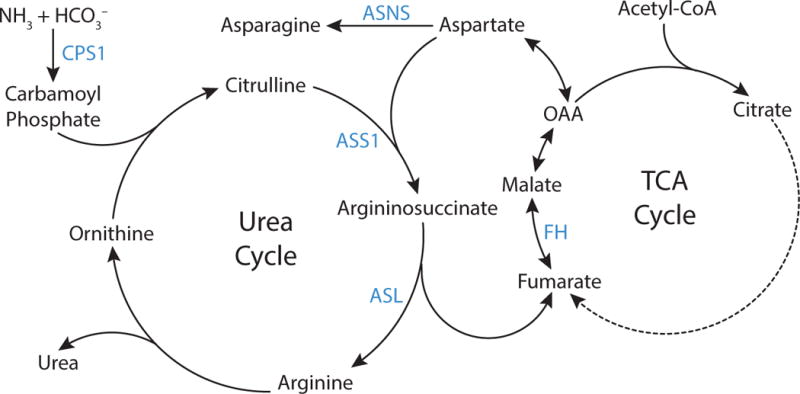Figure 7. Urea Cycle.

The urea cycle permits excretion of excess nitrogen as urea. Carbamoyl phosphate is synthesized from ammonia and bicarbonate by the enzyme carbamoyl phosphate synthetase 1 (CPS1), and subsequently carbamoyl phosphate and ornithine are used to produce citrulline. The enzyme argininosuccinate synthase (ASS1) condenses citrulline with aspartate to form argininosuccinate, which is then cleaved to arginine and fumarate by argininosuccinate lyase (ASL). Arginine is then hydrolyzed to produce urea and regenerate ornithine, completing the cycle. Fumarate produced by the urea cycle can regenerate aspartate via enzymes involved in the tricarboxylic acid (TCA) cycle as shown. Asparagine synthetase (ASNS) catalyzes production of asparagine from aspartate.
